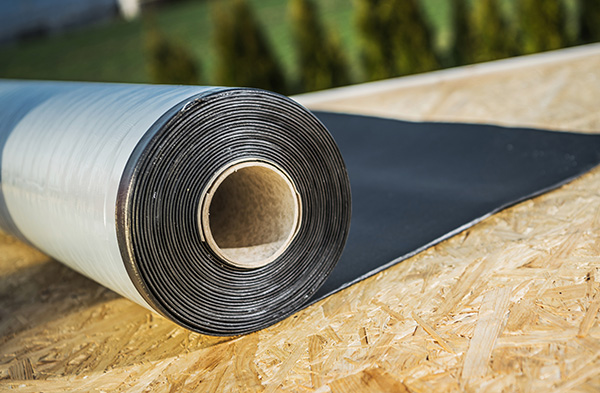Essential Roofing Waterproofing Products
Author: Dan Stout | January 23, 2024
When most people think of a roof, they might think of the shingles and gutters, not about the underlying structure and the materials that come together to protect a building. However, asphalt shingles and top-layer membranes are only the first lines of defense in a complete roofing system. Sooner or later, water will penetrate that top layer of roofing, and it's the roofing waterproofing that prevents long-term damage.

Without proper waterproofing, a roof will be vulnerable to wind-driven rains, standing water or ice dams. The result is rotten beams and a wet interior. Constructing a waterproof roof requires quality work and products at every stage, from design to underlayment to flashing and gutters.
Waterproofing Must-Haves
There are a few nonnegotiables that must make the list before a roof can be considered sufficiently waterproofed.
Proper Design
A design that creates multiple points for water to collect, or that calls for inappropriate building materials, can set up a roof for failure long before construction begins.
Base Sheet or Underlayment
Roofing terminology varies by region, but both base sheets and underlayments are applied directly to the roof decking and serve as the ultimate bedrock for the roof's waterproofing system. A "base sheet" usually refers to the bottom layer of a flat roof, sealing the deck and the foundation, while an "underlayment" sits under shingles, directly on the decking.
Both come in a variety of forms, from old-school tar paper to synthetic materials to specialized protection such as ice and water shields that might be necessary depending on the climate. Installation instructions for base sheets and underlayments will also vary with roof slope or climate.
Flashing
On every roof, there are places where the roofing material overlaps or butts against objects such as vents or chimneys. In these areas, flashing is required to prevent water infiltration. Flashing is also needed at junction points such as valleys, where water is likely to accumulate. There are many types of flashing, and the right choice depends on the roof material and location.
Gutters
Gutters aren't always in a roofer's scope of work. Depending on the job and a given company's expertise, gutters may be installed by the roofing company or subcontracted to a specialist. But poorly installed gutters can negatively impact a good roof, as clogs and backups can force water backward, against the natural flow of the roof, resulting in rot and leaks.
Optional Waterproofing Materials
Depending on the type of roof and the climate, some materials aren't necessary for waterproofing, but they can add a little extra security.
Roof Coating
Unlike underlayment, a roof coating is applied on top of the roofing material. This creates an extra layer of roofing waterproofing that can help shed water or even extend the life of a slightly damaged roof. Roof coatings are acrylic or silicone-based and can be applied when the roof is installed or added later in its life.
Ice and Water Shield (In Temperate Climates)
In areas with ice dams, an ice and water shield is typically required by code. But in more temperate climates, an ice and water shield moves out of the must-have category into the optional category. It protects the roof's perimeter against heavy rains and is equally useful in valleys or other areas where water builds up. It's also nice to have on low-slope roofs that shed water more slowly than steep slopes.
While not every product on your roster is essential for waterproofing, making sure you have the most important materials on your list will ensure satisfied customers with roofs that don't leak.